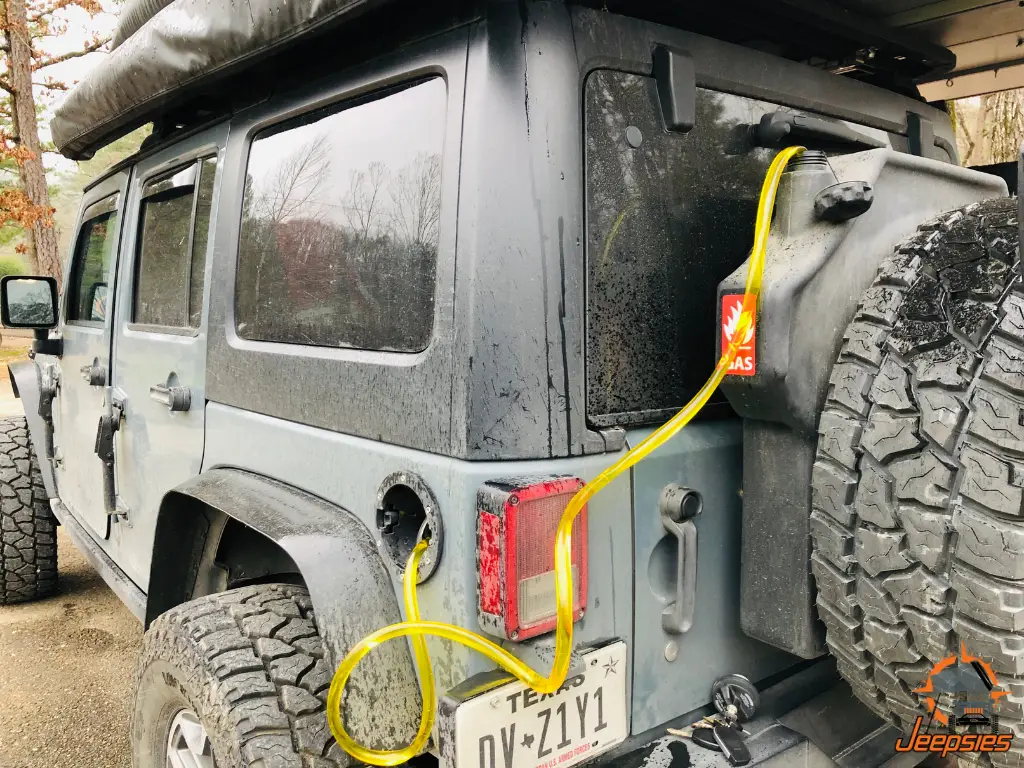
We had just crossed the border into Mexico, and the very next day we got word of a major fuel shortage country-wide. We didn’t have immediate access to the news, but our overlanding friends, who knew we’d just embarked on this epic journey, started private messaging me in droves.
While appreciative of the “heads-up” my friends were offering, it didn’t do much to ease the problem on the ground.
What did ease the seriousness of the circumstances, and our minds, was our Titan Fuel Tanks Trail Trekker II external fuel tank we installed on the back of our Jeep.
(Please note: as of this writing, we are not sponsored by Titan Fuel Tanks in any way. This is a fully independent review of what we chose for our fuel storage solution and why.)
Why We Chose Titan Fuel Tanks
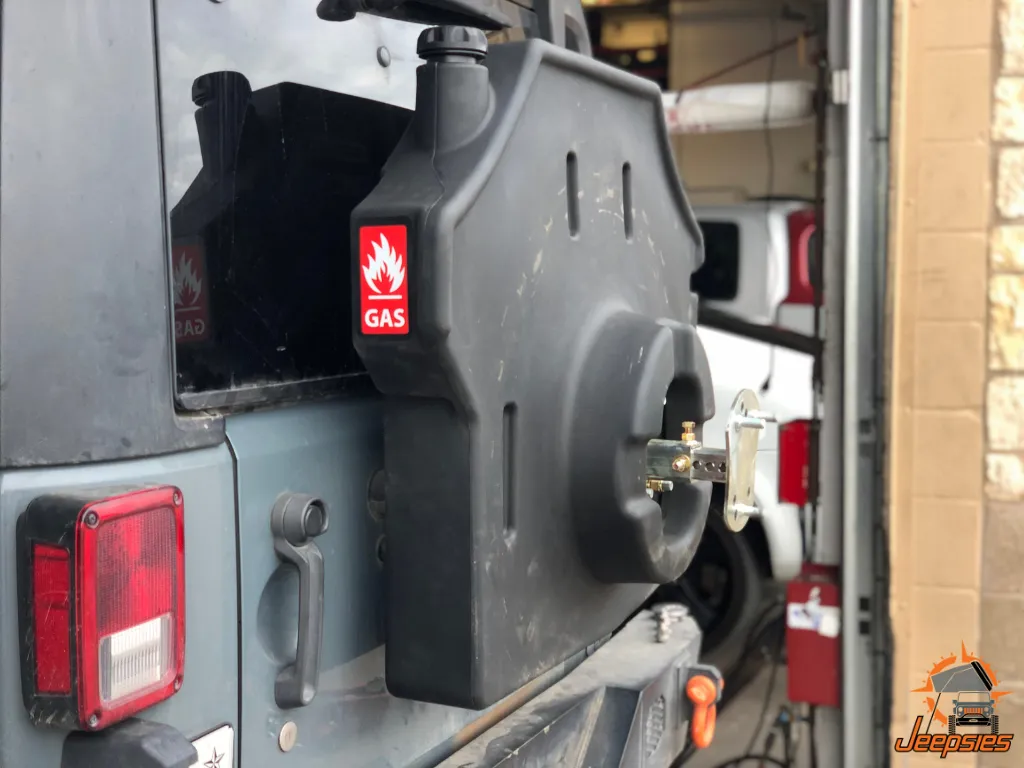
When we first started looking into fuel storage options, we were leaning towards Rotopax. Rotopax seems to be the standard in the overlanding world. And–not gonna lie–the red containers look pretty cool sitting on a rig.
As always, though, we do a ton of research before making any purchase.
I remember pricing the Rotopax setup. With the containers, mounts, and locks for a set of two Rotopax, it was getting pretty pricey. Didn’t matter, though. We still needed an external fuel storage solution.
Now for the record, we’re fans of Rotopax. We think they make excellent gear. As a matter of fact, we use two of their containers to carry water in our overlanding arsenal. We just weren’t sure if the company was the right solution for our fuel needs.
The problem wasn’t just the cost of the setup, but the comparatively small amount of extra fuel it would provide for the price. After I finished my research on a potential Rotopax solution, I presented my findings to my wife. She was alarmed at the cost for the limited capacity of fuel storage Rotopax would provide.
So the research continued.
We knew there had to be something else out there to at least consider.
In my continuing search, I ran across the Trail Trekker II by Titan Fuel Tanks. After thoroughly researching the company, checking out the product specifications, looking at reviews, and talking with others, I was convinced.
It was clear that, though also pricey, Titan Fuel Tanks’ solution for fuel was a better fit for us.
Titan Fuel Tanks Vs. Rotopax Comparison
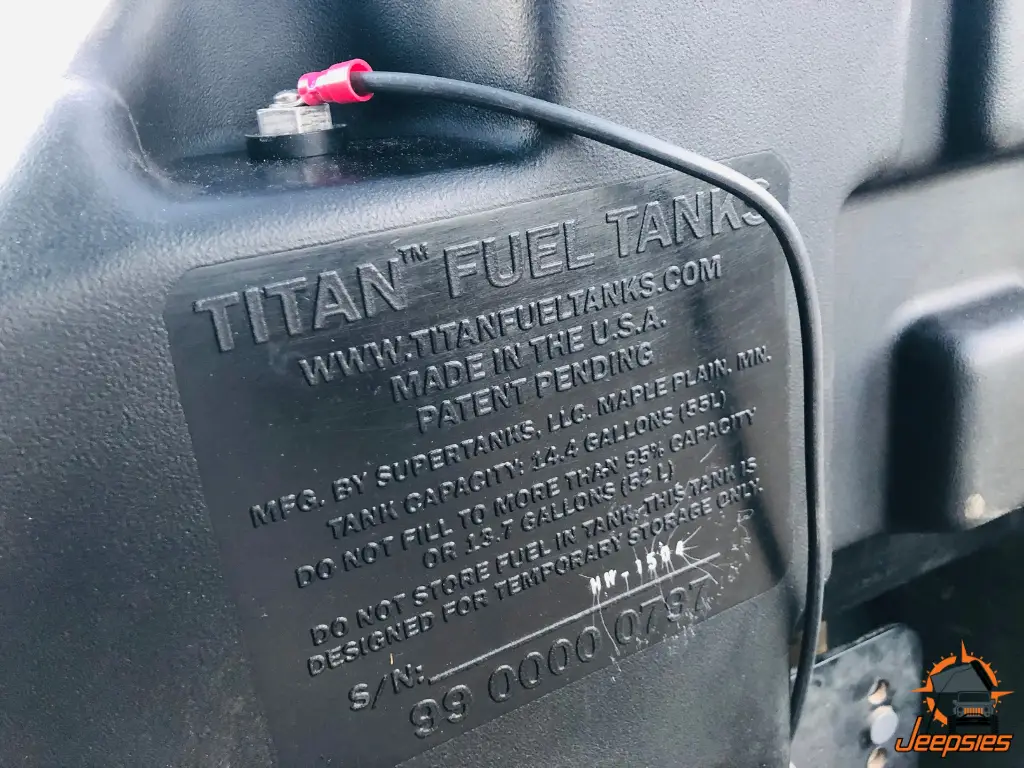
It was a simple comparison.
I compared the cost, capacity, and ease of use of Rotopax VS Titan Fuel Tanks.
Rotopax
Cost:
- 2 Rotopax containers: $114
- 2 Rotopax mounting plates: $50
- 2 Rotopax lox pack mounts: $120
Capacity:
- 2 Rotopax containers: 5 gallons of fuel
Total Cost and Capacity for the Rotopax option:
- $284 / 5 gallons of fuel
Titan Fuel Tanks
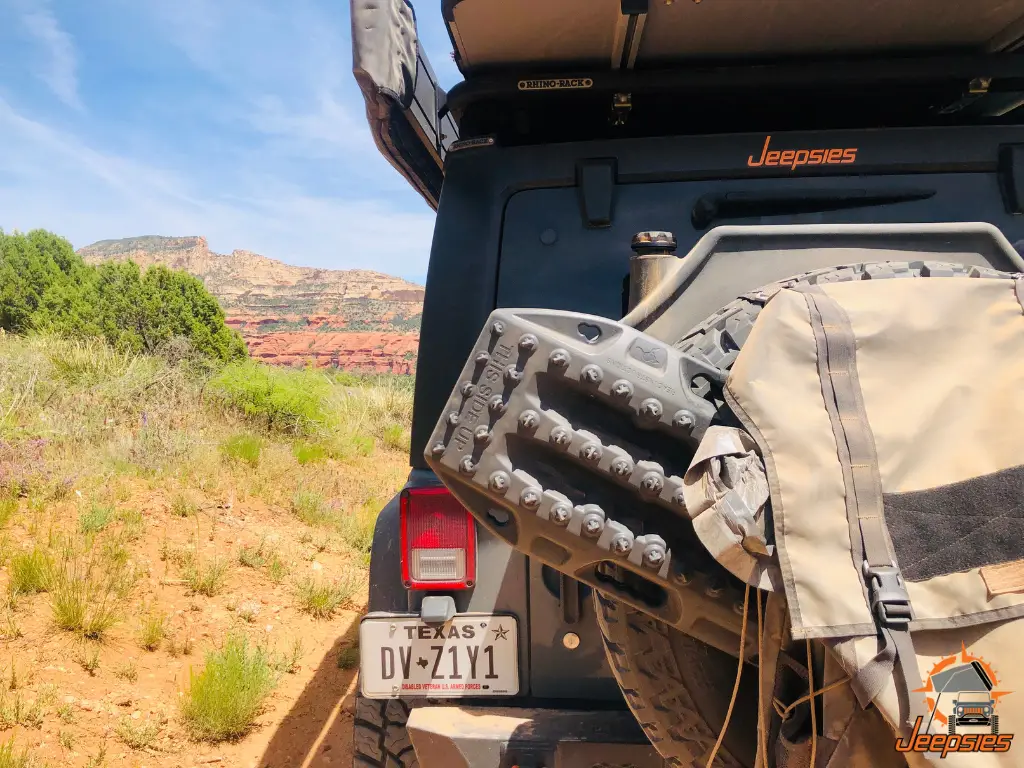
Cost:
- 1 Titan Fuel Tanks Trail Trekker II: $402.50
- (Nothing else required–all mounting materials included)
Capacity:
- 1 Titan Fuel Tanks Trail Trekker II: 12 gallons of fuel
Total Cost and Capacity for the Titan Fuel Tanks option:
- $402.50 / 12 gallons of fuel
So for $118.50 more, we got more than double the amount of fuel from the Titan Fuel Tanks solution.
But there were other reasons beyond cost and capacity that led us to our decision to go with Titan Fuel Tanks.
Trail Trekker II Ease of Use
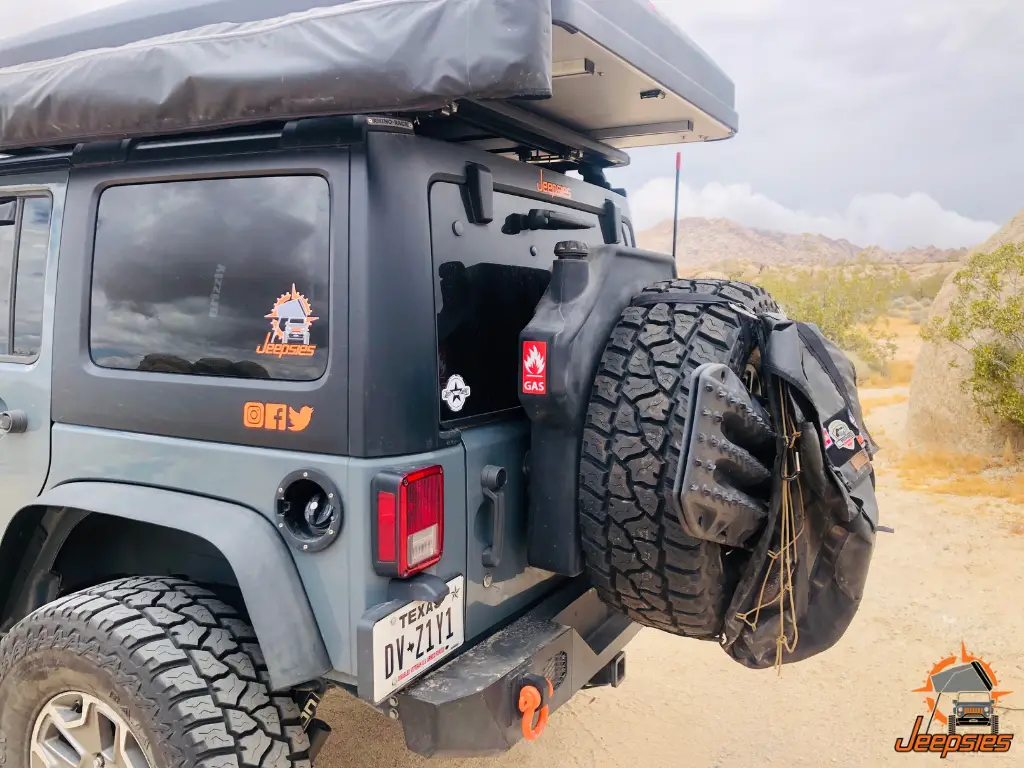
The Titan Fuel Tanks Trail Trekker II sits on the back of the vehicle, between the vehicle and rear spare tire. Mounting the tank was simple, and customer service at Titan was helpful on the one or two questions that came up during install.
Beyond the limited capacity of Rotopax and the concern for theft (which is why we included the price of locking mounts in our comparison), there was the issue of usability.
With Rotopax, you need to take them on and off the vehicle with each use, and whenever you fill them up. Then you need to open the container, and pull out the nozzle which lives inside the Rotopax and is dripping with fuel.
With the Titan Fuel Tanks Trail Trekker II, the tank is permanently affixed to the vehicle. Because it sits between the vehicle and spare tire, a simple lock on the wheel is enough to secure the tank to the vehicle.
In addition, the tank itself is grounded to the vehicle, which means you don’t have to bother moving it at all during filling or use.
The fuel in the Trail Trekker II is transferred via a shaker siphon hose. No mess, no fuss. Also, it transfers two gallons per minute, so it’s quite efficient.
With our setup, I can go from an empty tank of fuel in our Jeep to over a half tank of fuel in about six minutes, with no mess.
Titan Fuel Tanks Trail Trekker II Takes the Prize
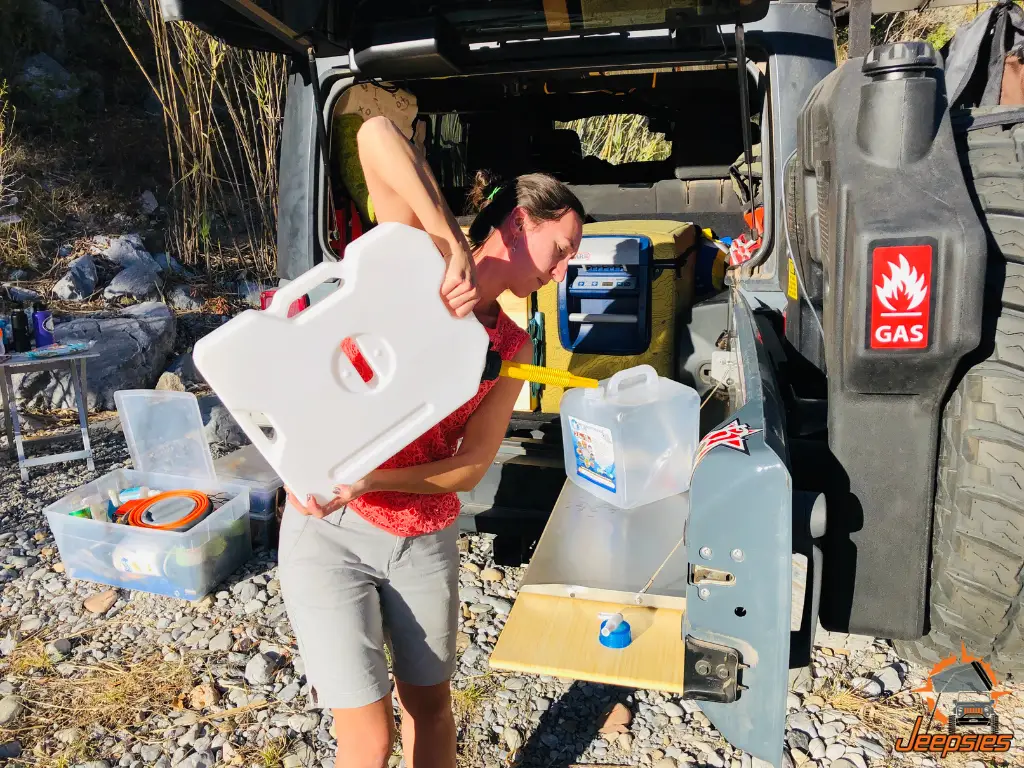
While still a huge fan of Rotopax for the way we use them, Titan Fuel Tanks Trail Trekker II is our clear standout winner when it comes to fuel.
As we traveled throughout interior Mexico this winter and glanced at the long gas lines during the shortage, we weren’t as concerned as we would’ve been otherwise. We made it a point to look for fuel as soon as we got to half a tank, and we always kept the Titan topped off.
I can’t personally speak to any other tank but our own. But if the quality of our tank is any indicator, then I’d highly suggest you take a good look at Titan Fuel Tanks when considering your fuel storage solutions. They make external fuel storage solutions for a myriad of vehicles.
We are very happy with ours. We get a ton of questions about it at every public speaking event and presentation we do. And we’re always happy to share.
I hope this article was helpful to you. Let me know your thoughts, or hit me with a tough question in the comment section below.
Until next time, keep it dirty and wheels side down.
~ Eric, Brittany, and #LittleNomad

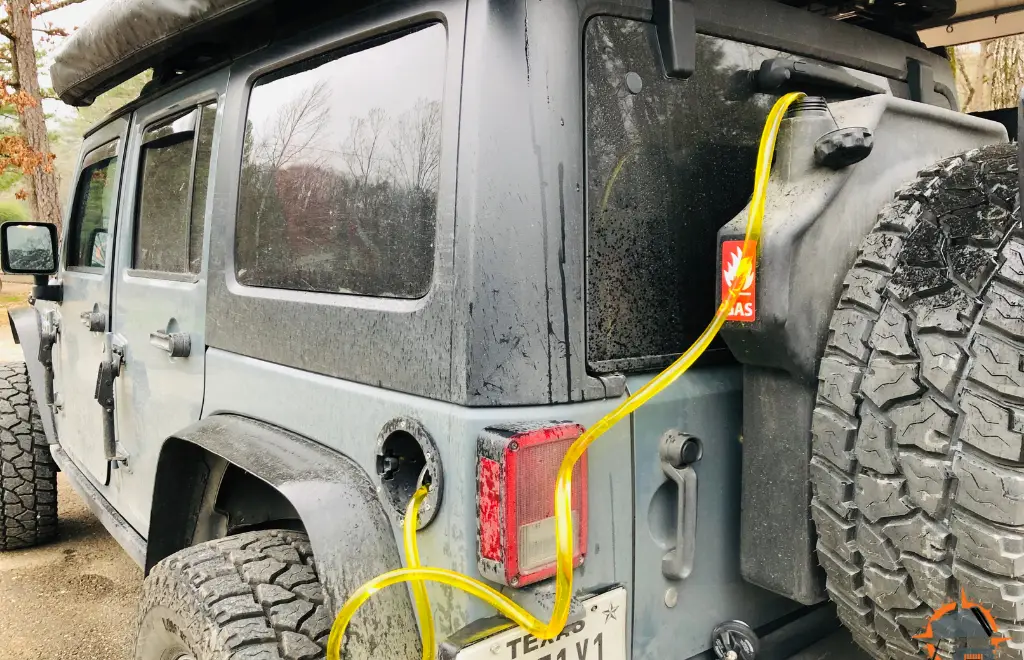


How do you siphon it out? That’s the concern I have. Plus the hose is wet with gas in your vehicle.
Believe it or not, the fuel evaporates very quickly off the hose. I simply use the shaker siphon hose then pull it out, wipe it down on the outside on the area that contacted fuel, and stow it in a large, heavy duty ziploc type bag. Never had an issue or a fuel smell in the vehicle after use. Hope that helps. ~ Eric
Looks like a great solution! How has it held up since you have had it? I’m looking at getting one and wonder what you have observed for the durability/build quality.
JT, the Titan Fuel Tanks Trail Trekker II has been great. It has held up to everything that I have thrown at it. No complaints whatsoever. We are in the process of building out another overland vehicle for our global travels and we’ll be leaving GUARDIAN our Jeep here in the USA. As such I’ll be taking off the external fuel tank from GUARDIAN as we really don’t need it for national based travels. Hope that answers your question. Let me know if you have any follow up questions. Eric
This is incredibly helpful! We are just starting our overland gear purchases, and are compiling a wish list that now includes this fuel solution. THANKS!
Right on Hannah. It’s a great tank. Just know that for North America, 12 gallons is a lot of fuel. It could be overkill unless you are looking to do extended journeys away from civilization. All my best. ~ Eric
Hi,
We are considering the Titan and concerned about people siphoning the fuel? Do you have a locking cap for the Titan?
Hi Gabriel. We did not have a locking cap for the fuel. The thought crossed our minds as well. However, you’ll generally keep the unit empty unless you are running an area with limited fuel availability in which case you’ll usually be with the vehicle. That was our experience. I’m sure Titan may have thought of that as well and may have a solution, though I’m not aware. Hope that is helpful. ~ E
Hi, I have been thinking of getting the Titan Trail Trekker II for my new Wrangler Rubicon. But, I’m getting the Ursa Minor Camper top installed and since I see you have a rooftop tent I wanted to ask if you smelled gas fumes from the Trail Trekker since it has an open vent cap? To be clear , is the vent cap always open or just can it be tightened down closed to minimize smell and just opened when syphoning gas out? As you can see, I have no experience with auxiliary gas systems.
Thanks,
Mike O’Connor
Mike, it’s a fair question! The answer is no, there was never a smell of fuel anywhere, including in the tent. We vented the cap from time to time, but it was a simple opening and closing again–all at once.
What upgrades have you made to the swingate or hinges to support the weight of the spare fuel, spare tire and tailgate table? How much weight are you carrying on the swingate when the spare fuel is full?
On Guardian we use the TeraFlex Carrier. Full article here: https://hourlesslife.com/teraflex-tire-carrier/ ~ Eric